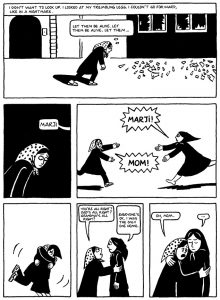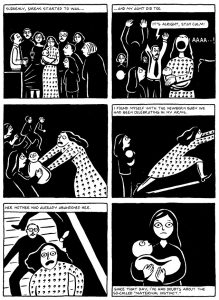Hello readers. Recently, our ASTU class had time to watch movie American Sniper directed by Clint Eastwood. This film was portraying Iraq War through the perspective of American Sniper, Chris Kyle. Based on the real character, American Sniper generally glorify the character of Chris Kyle with patriotism and comradeship. Then again, American Sniper maintained its neutrality towards Iraq War. I would explore some of the scenes from American Sniper that I felt intriguing.
The character of Chris Kyle was portrayed as “hero” in the film. After 9/11 terror, Chris Kyle enlisted in American Navy Seal with burning anger towards enemy and patriotism towards one’s nation. This talented sniper soon became “legend” when he was sent as troops. In the film, there was the contrary role of Chris Kyle who was a sniper of Iraqi people called Mustafa. These two characters have the same role as a sniper on one’s side, but contradicting appraisals of “legend” and “evil” are following them on one’s side. In Iraqi’s side Chris is “evil” and in American’s side Chris is “legend.”
As the major role of the story focuses on the character of a sniper, Chris’s perspective towards war was projected through the scope of the gun. He was in the war but looking at a distance as the sniper. He watched enemies through the scope at the distance and killed them at the distance. When Chris Kyle hold rifle instead of a sniper rifle and went to the battlefields, he is drawn into a war. The scene that he saw, the noise that he heard from the battlefields were vicious and chaotic. What Chris experienced on the battlefield were contradictory to the battlefield that he saw through the scope where all emotions and noises remain silent.
His experiences were not only remained in the battlefields but also continued to harassing him even when he came back home. Suffering from PTSD, Chris was unable to entirely came back to his home but fighting on the battlefield in his mind. Chris choose to help war veterans and kept his role as “father,” “husband,” and “veteran” until he died by the gun of the war veteran who Chris tried to help. In the last scene, Chris’s wife Taya was gaze Chris and war veteran through a chink in the door. Two war veterans and heroes, who were seen in Taya’s perspective were projected differently: one as an attentive father and the other as the war veteran who lives in a reality that is the war to him.

